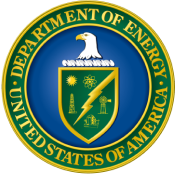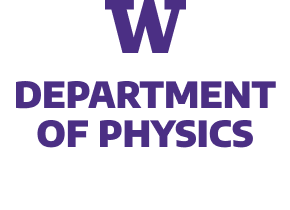IQuS Publications
Preparations for Quantum Simulations of Quantum Chromodynamics in 1+1 Dimensions: (II) Single-Baryon Beta-Decay in Real Time
A framework for quantum simulations of real-time weak decays of hadrons and nuclei in a 2-flavor lattice theory in one spatial dimension is presented. A single generation of the Standard Model is mapped to spin operators via the Jordan-Wigner transformation, and both quantum chromodynamics and flavor-changing weak interactions are included in the dynamics, the latter through four-Fermi effective operators. This mapping requires 16 qubits per spatial lattice site. Quantum circuits which implement time evolution in this lattice theory are developed and run on Quantinuum’s H1 1 20-qubit trapped ion system to simulate the beta-decay of a single baryon on one lattice site. Simulations of the real-time evolution of a single baryon, including initial state preparation, are performed for both one and two Trotter time steps. We comment on the potential intrinsic error-correction properties of this type of lattice theory.
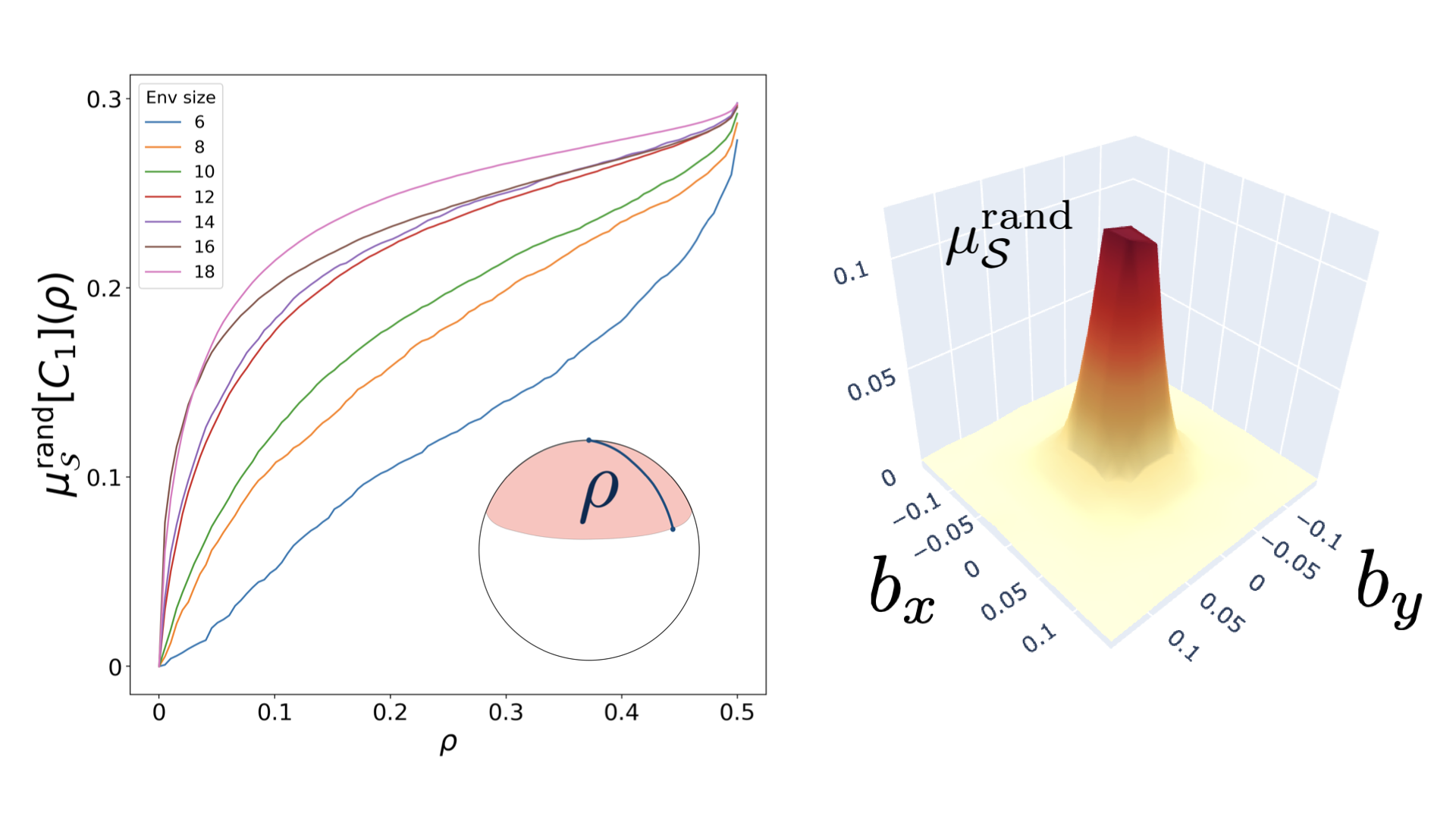
Branching States as The Emergent Structure of a Quantum Universe
Quantum Darwinism builds on decoherence theory to explain the emergence of classical behavior within a quantum universe. We demonstrate that the differential geometric underpinnings of quantum mechanics provide a uniquely informative window into the structure of correlations needed to validate quantum Darwinism. This leads us to two crucial insights about the emergence of classical phenomenology, centered around the nullity of quantum discord. First, we show that the so-called branching structure of the joint state of system and environment is the only one compatible with zero discord. Second, we prove that for small, but nonzero discord, the structure of the globally pure state is arbitrarily close to the branching form. These provide strong evidence that this class of branching states is the only one compatible with the emergence of classical phenomenology, as described in quantum Darwinism.
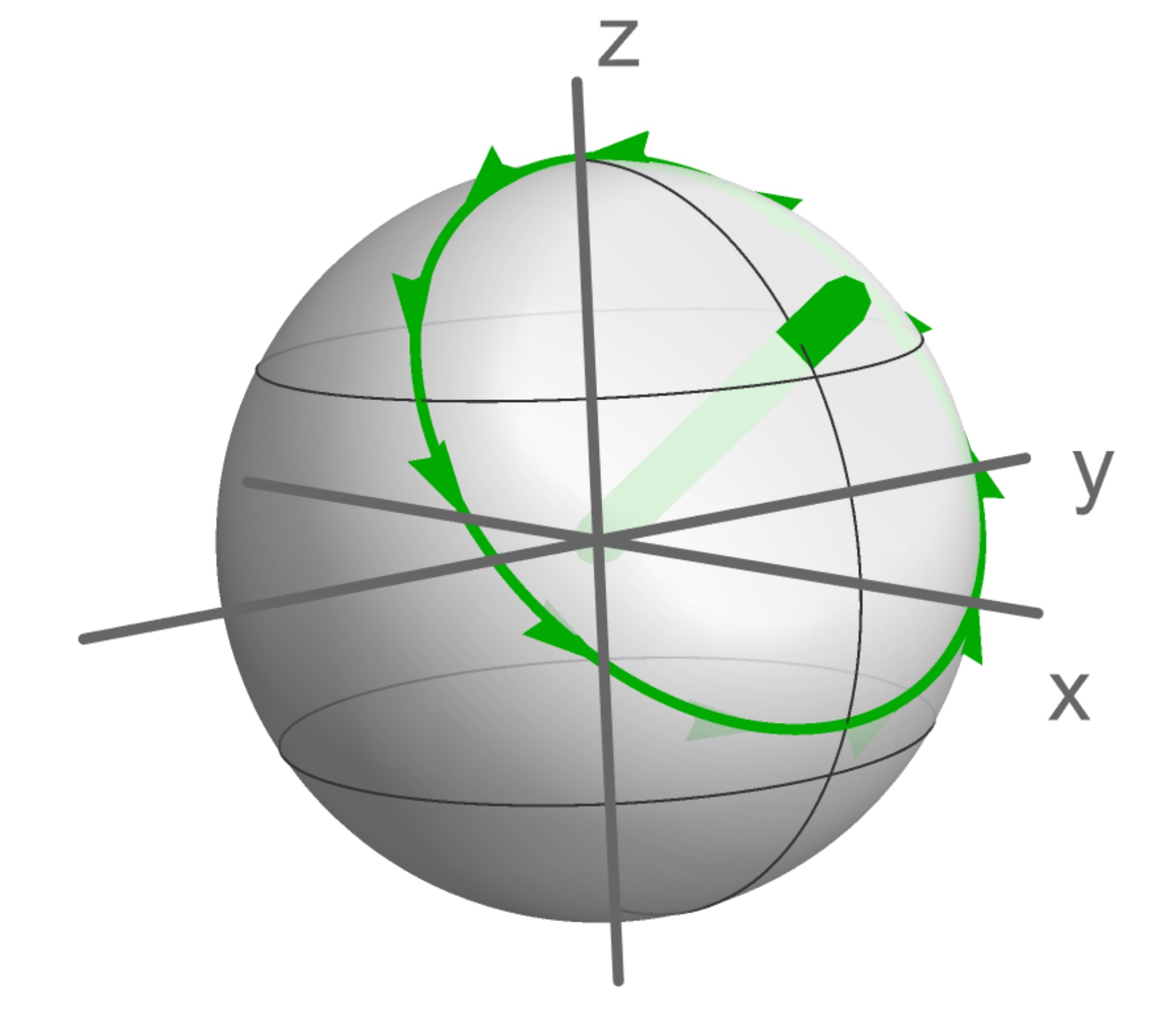
Simulating Heisenberg interactions in the Ising model with strong drive fields
The time-evolution of an Ising model with large driving fields over discrete time intervals is shown to be reproduced by an effective XXZ-Heisenberg model at leading order in the inverse field strength. For specific orientations of the drive field, the dynamics of the XXX-Heisenberg model is reproduced. These approximate equivalences, valid above a critical driving field strength set by dynamical phase transitions in the Ising model, are expected to enable quantum devices that natively evolve qubits according to the Ising model to simulate more complex systems.
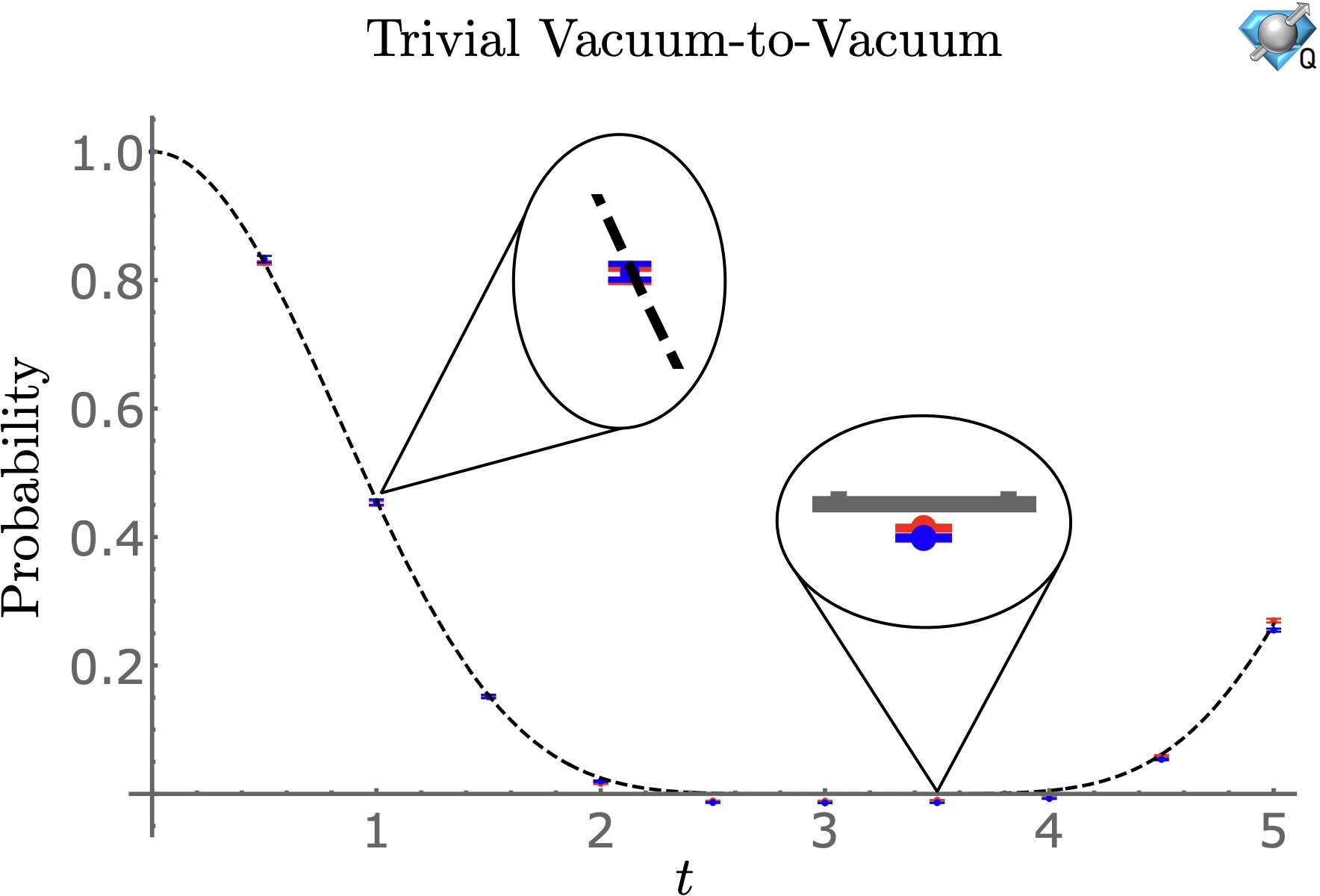
Preparations for Quantum Simulations of Quantum Chromodynamics in 1+1 Dimensions: (I) Axial Gauge
The resource requirements for quantum simulations of 1+1 dimensional quantum chromodynamics are estimated. When formulated in axial gauge and with two flavors of quarks, this system requires 12 qubits per spatial site once Gauss’s law has been enforced to uniquely constrain the gauge fields. Classical computations and D-Wave’s quantum annealer Advantage are used to determine the hadronic spectrum, enabling a decomposition of the masses and a study of quark entanglement. We identify color “edge” states, resulting from open boundary conditions, that are confined within a screening length to the end of the lattice. Quantum circuits for the time evolution of SU(Nc) gauge theory with Nf flavors of quarks are developed and used to determine the resources required for large-scale quantum simulations. IBM’s 7-qubit quantum computers ibmq_jakarta and ibm_perth were used to compute the trivial vacuum-to-vacuum and trivial vacuum-to-qr qr bar probabilities in Nf=1 QCD with one spatial site from one Trotter step of the time-evolution operator.
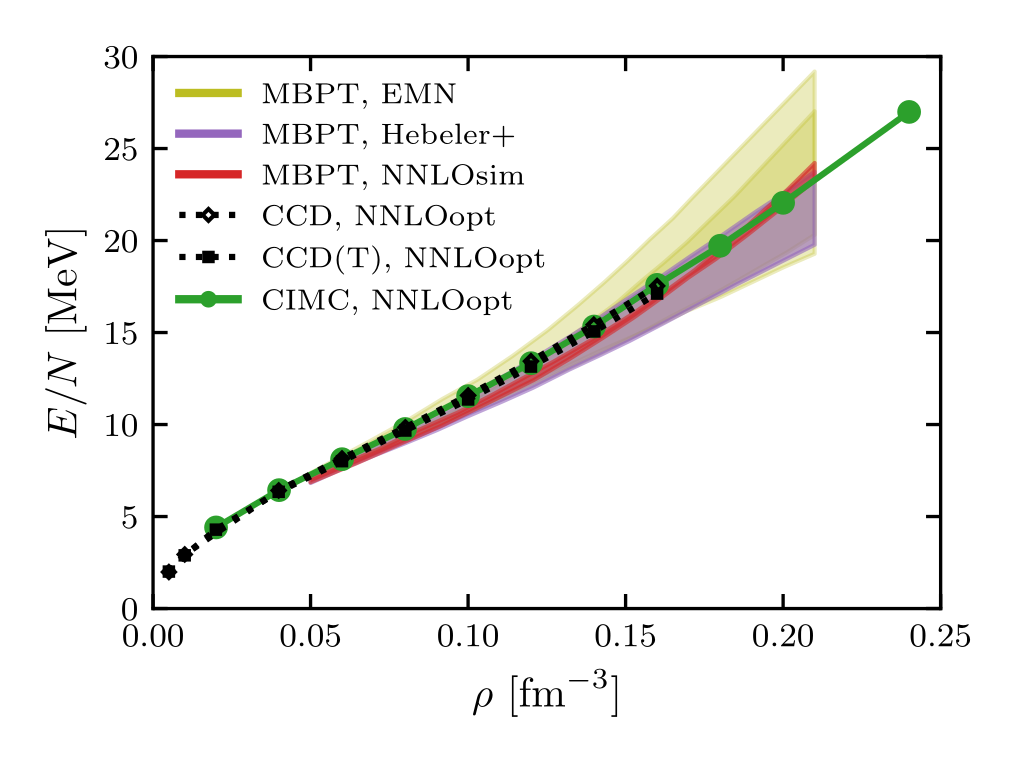
Quantum Monte Carlo in Configuration Space with Three-Nucleon Forces
Neutron matter, through its connection to neutron stars as well as systems like cold atom gases, is one of the most interesting yet accessible systems in nuclear physics. The Configuration-Interaction Monte Carlo (CIMC) method is a stochastic many-body technique allowing to tackle strongly coupled systems. In contrast to other Quantum Monte Carlo methods employed in nuclear physics, the CIMC method can be formulated directly in momentum space allowing for an efficient use of non-local interactions.
In this work we extend CIMC method to include three-nucleon interactions through the normal-ordered two-body approximation. We present results for the equation of state of neutron matter in line with other many-body calculations with low resolution chiral interactions, and provide predictions for the momentum distribution and the static structure factor.
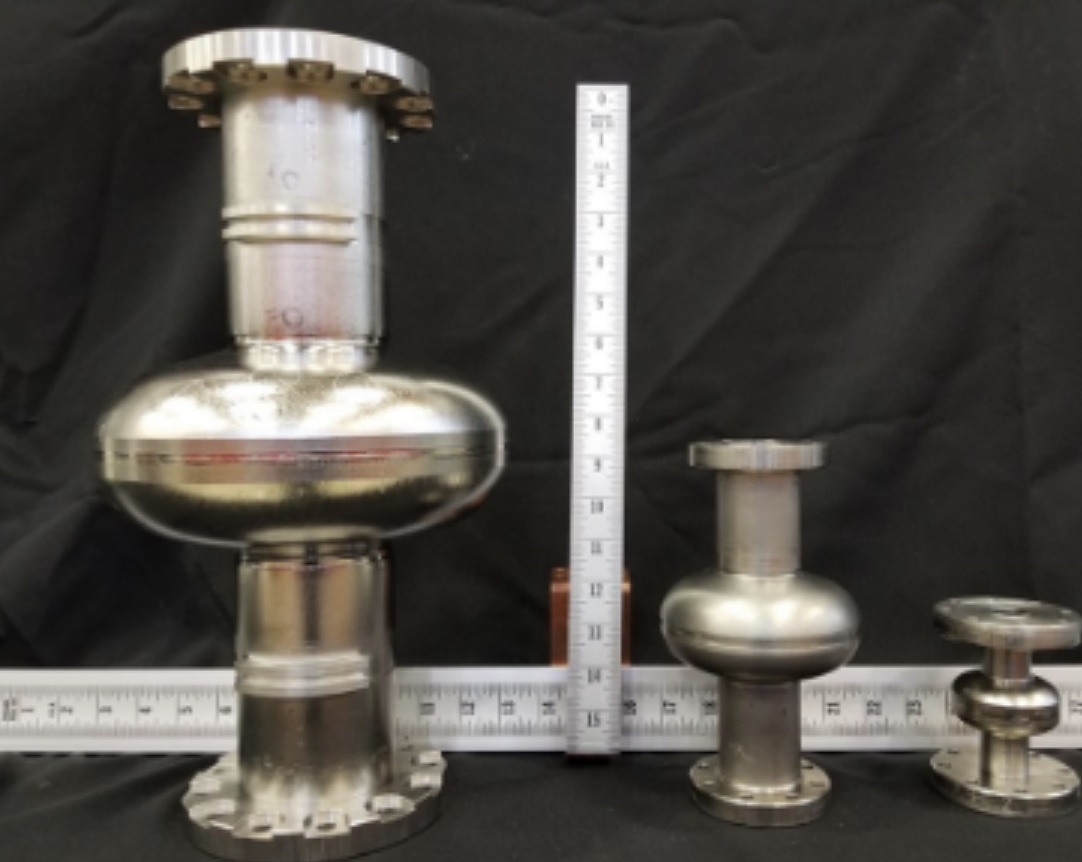
Snowmass Computational Frontier: Topical Group Report on Quantum Computing
Quantum computing will play a pivotal role in the High Energy Physics (HEP) science program over the early parts of the Twenty First Century, both as a major expansion of our capabilities across the Computational Frontier, and in synthesis with quantum sensing and quantum networks. This report outlines how Quantum Information Science (QIS) and HEP are deeply intertwined endeavors that benefit enormously from a strong engagement together.
A number of problems ranging from simulation of quantum field theories, to fully leveraging the most sensitive sensor suites for new particle searches, and even data analysis will run into limiting bottlenecks if constrained to our current computing paradigms. Easy early access to quantum computers is needed to build a deeper understanding of these connections and the opportunities for advancement. In turn, HEP brings crucial expertise to the national quantum ecosystem in quantum domain knowledge, materials science, cryogenic and fast electronics, and massive-scale project management. The role of quantum technologies across the entire economy and society at large is expected to grow rapidly over the next decade, so it is important to establish the role of HEP in the efforts surrounding QIS. Fully delivering on the promise of quantum technologies and the goals of the HEP science program requires robust support. It is important to invest in the co-design opportunities afforded by the broader quantum computing ecosystem by leveraging HEP strengths in QIS for materials, electronics, and theory with the goal of designing quantum computers tailored to HEP science.
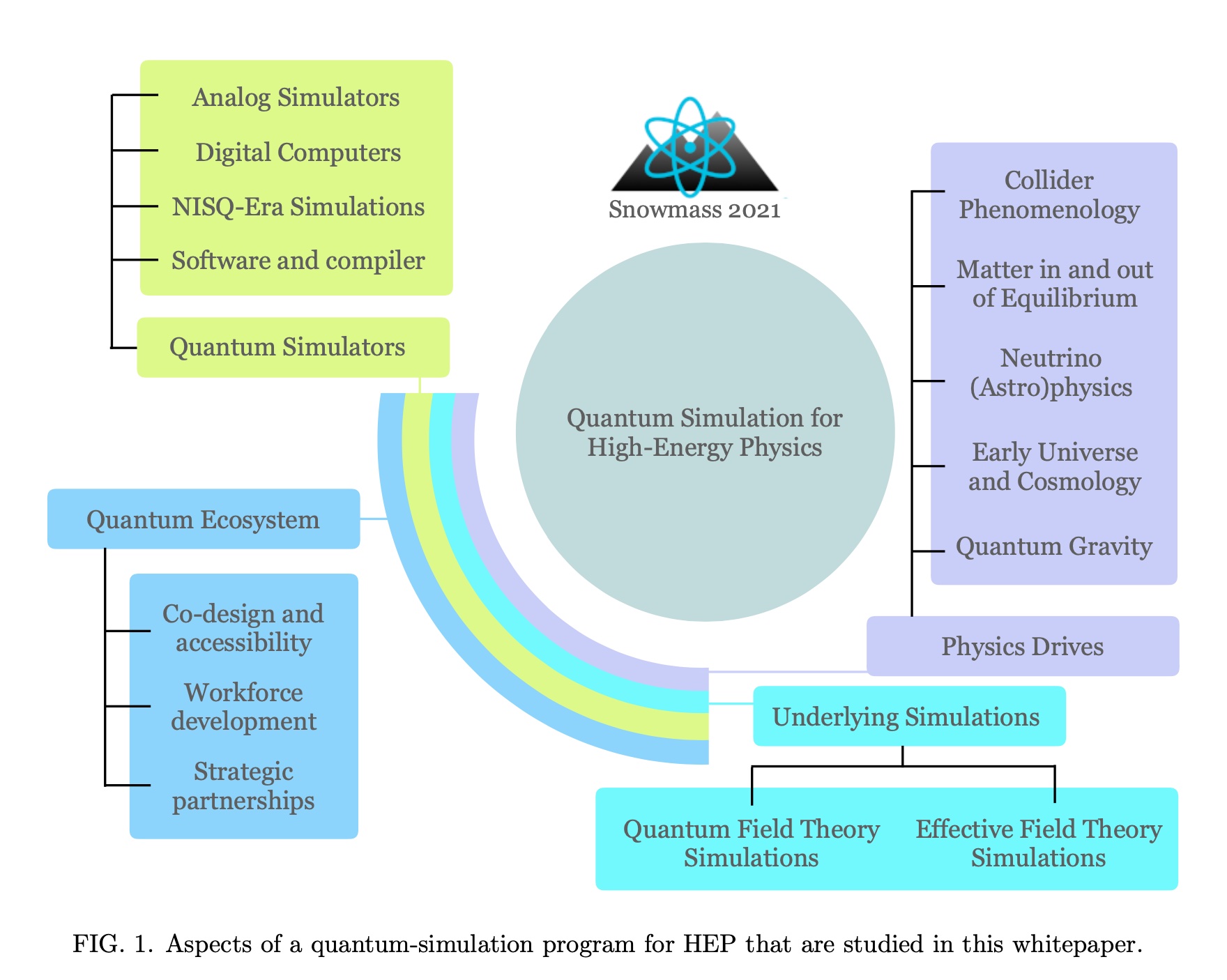
Quantum Simulation for High-energy Physics
It is for the first time that quantum simulation for high-energy physics (HEP) is studied in the U.S. decadal particle-physics community planning, and in fact until recently, this was not considered a mainstream topic in the community. This fact speaks of a remarkable rate of growth of this subfield over the past few years, stimulated by the impressive advancements in quantum-information sciences (QIS) and associated technologies over the past decade, and the significant investment in this area by the government and private sectors in the U.S. and other countries. High-energy physicists have quickly identified problems of importance to our understanding of nature at the most fundamental level, from tiniest distances to cosmological extents, that are intractable with classical computers but may benefit from quantum advantage. They have initiated, and continue to carry out, a vigorous program in theory, algorithm, and hardware co-design for simulations of relevance to the HEP mission. This community whitepaper is an attempt to bring this exciting and yet challenging area of research to the spotlight, and to elaborate on what the promises, requirements, challenges, and potential solutions are over the next decade and beyond.
This whitepaper is prepared for the topical groups CompF6 (Quantum computing), TF05 (Lattice Gauge Theory), and TF10 (Quantum Information Science) within the Computational Frontier and Theory Frontier of the U.S. Community Study on the Future of Particle Physics (Snowmass 2021).
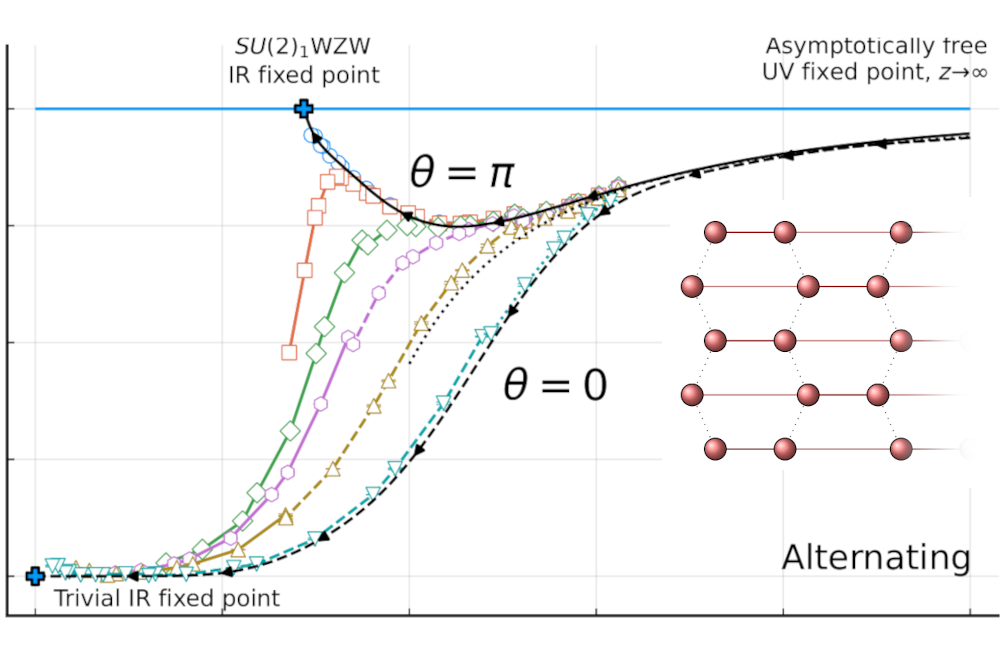
From Asymptotic Freedom to Theta Vacua: Qubit Embeddings of the O(3) Nonlinear Sigma Model
Conventional lattice formulations of $\theta$ vacua in the $1+1$-dimensional $O(3)$ nonlinear sigma model suffer from a sign problem. Here, we construct the first sign-problem-free regularization for \emph{arbitrary} $\theta$. Using efficient lattice \ac{MC} computations, we demonstrate how a Hamiltonian model of spin-$\tfrac12$ degrees of freedom on a 2-dimensional spatial lattice reproduces both the infrared sector for arbitrary $\theta$, as well as the ultraviolet physics of asymptotic freedom. Furthermore, as a model of qubits on a two-dimensional square lattice with only nearest neighbor interactions, it is naturally suited for studying the physics of $\theta$ vacua and asymptotic freedom on near-term quantum devices. Our construction generalizes to $\theta$-vacua in all $\CP(N-1)$ models, solving a long standing sign problem.

Some Conceptual Aspects of Operator Design for Quantum Simulations of Non-Abelian Lattice Gauge Theories
In the Kogut-Susskind formulation of lattice gauge theories, a set of quantum numbers resides at the ends of each link to characterize the vertex-local gauge field. We discuss the role of these quantum numbers in propagating correlations and generating entanglement that ensures each vertex remains gauge invariant, despite time evolution induced by operators with (only) partial access to each vertex Hilbert space. Applied to recent proposals for eliminating vertex-local Hilbert spaces in quantum simulation, we describe how the required entanglement is generated via delocalization of the time evolution operator with nearest-neighbor controls. These hybridizations, organized with qudits or qubits, exchange classical operator pre-processing for reductions in resource requirements that extend throughout the lattice volume.
(Contribution to proceedings of the 2021 Quantum Simulation for Strong Interactions (QuaSi) Workshops at the InQubator for Quantum Simulation (IQuS))
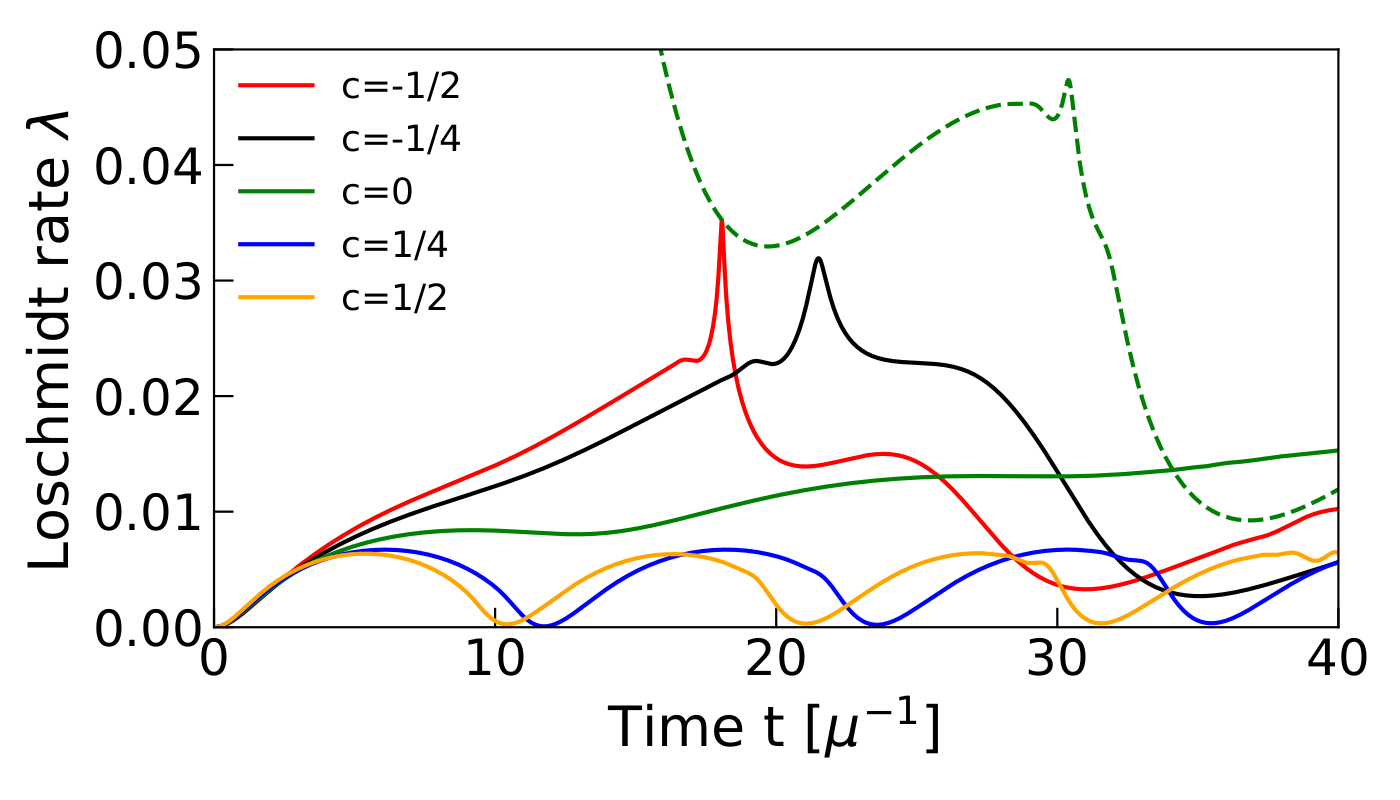
Entanglement and correlations in fast collective neutrino flavor oscillations
Collective neutrino oscillations play a crucial role in transporting lepton flavor in astrophysical settings like supernovae and neutron star binary merger remnants, which are characterized by large neutrino densities. In these settings, simulations in the mean-field approximation show that neutrino-neutrino interactions can overtake vacuum oscillations and give rise to fast collective flavor evolution on time-scales t ~ μ-1, with μ proportional to the local neutrino density. In this work, we study the full out-of-equilibrium flavor dynamics in simple multi-angle geometries displaying fast oscillations. Focusing on simple initial conditions, we analyze the production of pair correlations and entanglement in the complete many-body-dynamics as a function of the number N of neutrinos in the system.
Similarly to simpler geometries with only two neutrino beams, we identify three regimes: stable configurations with vanishing flavor oscillations, marginally unstable configurations with evolution occurring at long time scales τ~μ-1√N and unstable configurations showing flavor evolution on short time scales τ~μ-1log(N). We present evidence that these fast collective modes are generated by the same dynamical phase transition which leads to the slow bipolar oscillations, establishing a connection between these two phenomena and explaining the difference in their time scales.
We conclude by discussing a semi-classical approximation which reproduces the entanglement entropy at short to medium time scales and can be potentially useful in situations with more complicated geometries where classical simulation methods starts to become inefficient.
